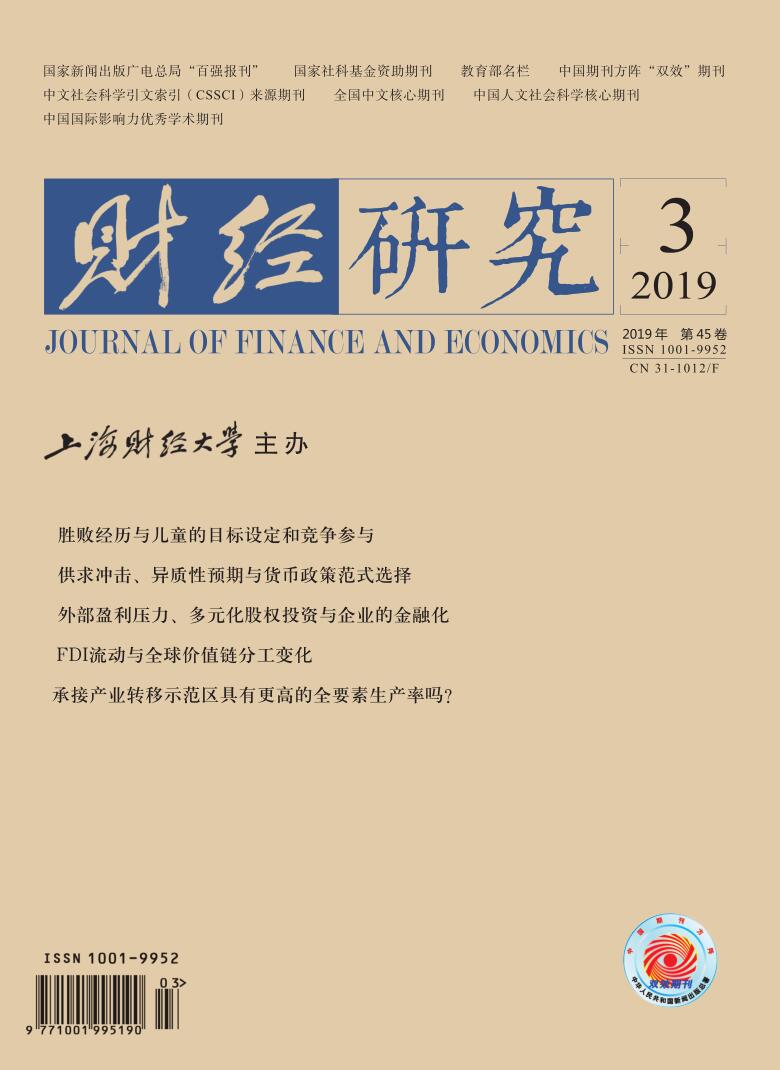文章基于国际投入产出数据构建“国际贸易−碳排放”矩阵,将网络分析方法与全球向量自回归方法相结合,充分捕捉国家间的经济贸易及碳排放联系,合理描述了国际碳排放关系的网络特征。研究结论为:发达经济体的点入度较大,金砖国家和新兴经济体国家的点出度较高,发展中国家为发达国家承担了部分碳排放责任,这与国家间产品流动及其引发的碳转移方向一致,网络中心度的提升即国家间经济联系和生产环节增多会推动碳排放量增长。在中国碳排放波动的冲击来源中,除日本外的发达经济体和金砖国家经济增长对中国碳排放呈现倒“
“国际贸易—碳排放”网络的结构特征与传导路径研究
摘要
参考文献
摘要
1 蒋雪梅,刘轶芳. 全球贸易隐含碳排放格局的变动及其影响因素[J]. 统计研究,2013,(9):29−36 DOI:10.3969/j.issn.1002-4565.2013.09.005
6 齐晔,李惠民,徐明. 中国进出口贸易中的隐含碳估算[J]. 中国人口·资源与环境,2008,(3):8−13 DOI:10.3969/j.issn.1002-2104.2008.03.002
7 王美昌,徐康宁. 贸易开放、经济增长与中国二氧化碳排放的动态关系——基于全球向量自回归模型的实证研究[J]. 中国人口·资源与环境,2015,(11):52−58 DOI:10.3969/j.issn.1002-2104.2015.11.007
12 Antweiler W,Copeland B R,Taylor M S. Is free trade good for the environment?[J]. The American Economic Review,2001,91(4): 877−908. DOI:10.1257/aer.91.4.877
13 Boschi M,Girardi A. The contribution of domestic,regional and international factors to Latin America’s business cycle[J]. Economic Modelling,2011,28(3): 1235−1246. DOI:10.1016/j.econmod.2011.01.002
14 Chang P L,Shih H Y. Comparing patterns of intersectoral innovation diffusion in Taiwan and China:A network analysis[J]. Technovation,2005,25(2): 155−169. DOI:10.1016/S0166-4972(03)00077-4
15 Coondoo D,Dinda S. Causality between income and emission:A country group-specific econometric analysis[J]. Ecological Economics,2002,40(3): 351−367. DOI:10.1016/S0921-8009(01)00280-4
17 Copeland B R,Taylor M S. Free trade and global warming:A trade theory view of the Kyoto protocol[J]. Journal of Environmental Economics and Management,2005,49(2): 205−234. DOI:10.1016/j.jeem.2004.04.006
18 Eickmeier S,Ng T. How do US credit supply shocks propagate internationally? A GVAR approach[J]. European Economic Review,2015,74: 128−145. DOI:10.1016/j.euroecorev.2014.11.011
19 Granger C W J,Jeon Y. Evaluation of global models[J]. Economic Modelling,2007,24(6): 980−989. DOI:10.1016/j.econmod.2007.03.008
20 Grossman G M, Krueger A B. Environmental impacts of a north American free trade agreement[A]. Garber P M. The Mexico-US free trade agreement[C]. Cambridge MA: MIT Press, 1993: 223−250.
21 Holtz-Eakin D,Selden T M. Stoking the fires? CO2 emissions and economic growth[J]. Journal of Public Economics,1995,57(1): 85−101. DOI:10.1016/0047-2727(94)01449-X
22 Jorgenson A K,Clark B. Are the economy and the environment decoupling? A comparative international study,1960—2005[J]. American Journal of Sociology,2012,118(1): 1−44. DOI:10.1086/665990
23 Machado G,Schaeffer R,Worrell E. Energy and carbon embodied in the international trade of Brazil:An input-output approach[J]. Ecological Economics,2001,39(3): 409−424. DOI:10.1016/S0921-8009(01)00230-0
24 Montresor S,Marzetti G V. Applying social network analysis to input–output based innovation matrices:An illustrative application to six OECD technological systems for the middle 1990s[J]. Economic Systems Research,2009,21(2): 129−149. DOI:10.1080/09535310902940228
26 Peters G P,Minx J C,Weber C L,et al. Growth in emission transfers via international trade from 1990 to 2008[J]. Proceedings of the National Academy of Sciences of the United States of America,2011,108(21): 8903−8908. DOI:10.1073/pnas.1006388108
27 Prell C. Wealth and pollution inequalities of global trade:A network and input-output approach[J]. Social Science Journal,2016,53(1): 111−121. DOI:10.1016/j.soscij.2015.08.003
29 Wyckoff A W,Roop J M. The embodiment of carbon in imports of manufactured products:Implications for international agreements on greenhouse gas emissions[J]. Energy Policy,1994,22(3): 187−194. DOI:10.1016/0301-4215(94)90158-9
30 Zhang X P,Cheng X M. Energy consumption,carbon emissions,and economic growth in China[J]. Ecological Economics,2009,68(10): 2706−2712. DOI:10.1016/j.ecolecon.2009.05.011
引用本文
张同斌, 孙静. “国际贸易—碳排放”网络的结构特征与传导路径研究[J]. 财经研究, 2019, 45(3): 114-126.
导出参考文献,格式为:





 7057
7057  17234
17234

